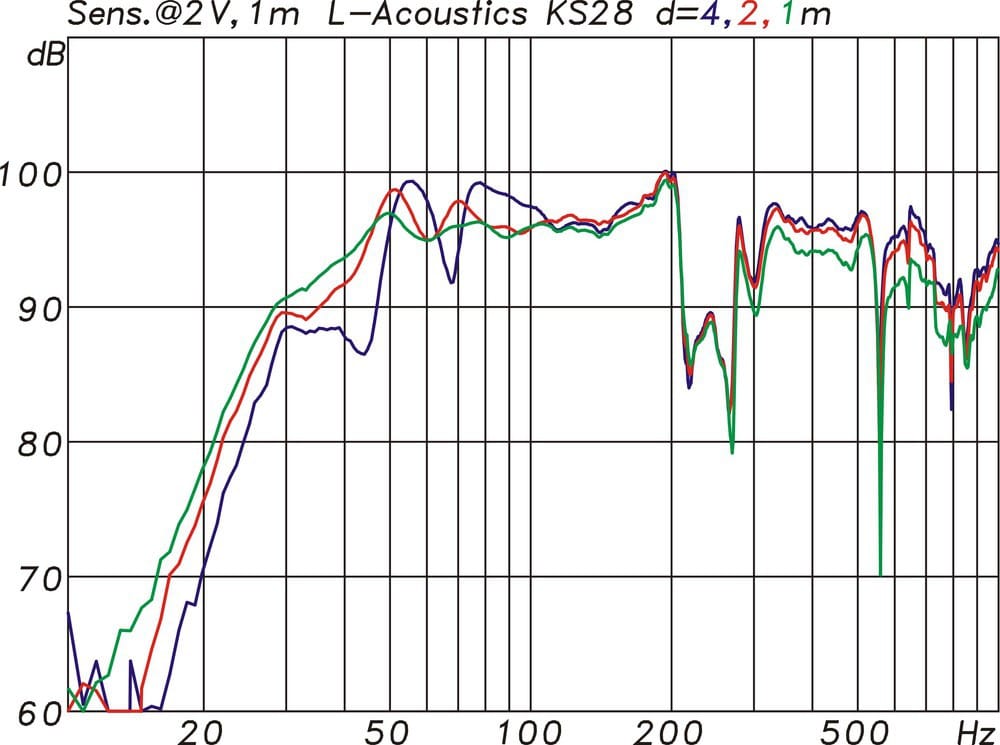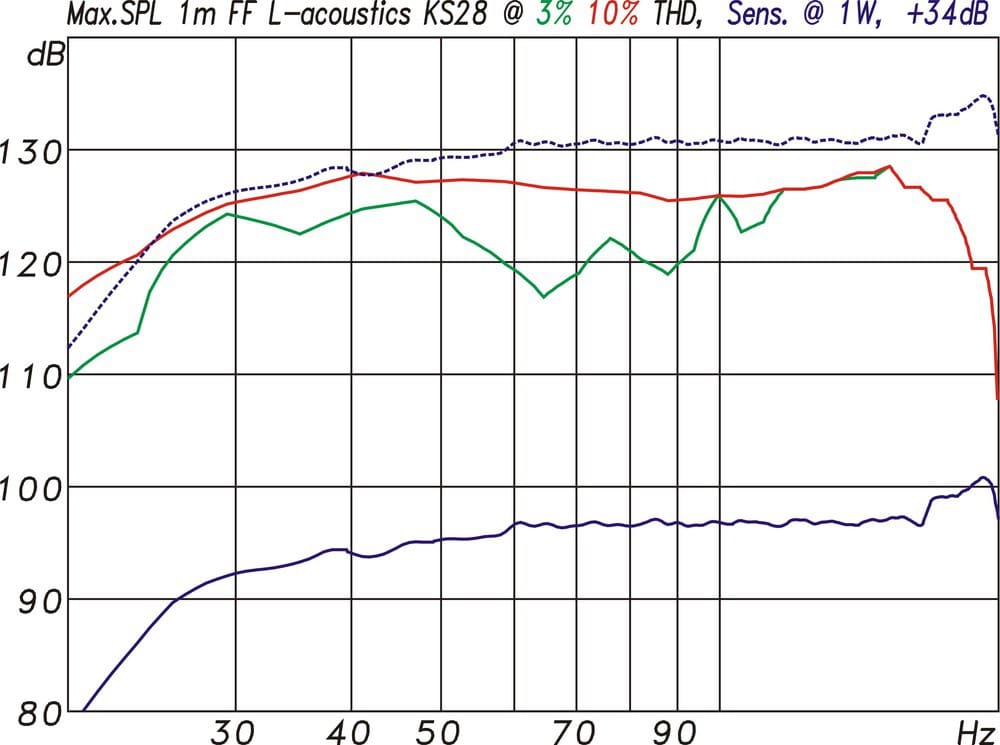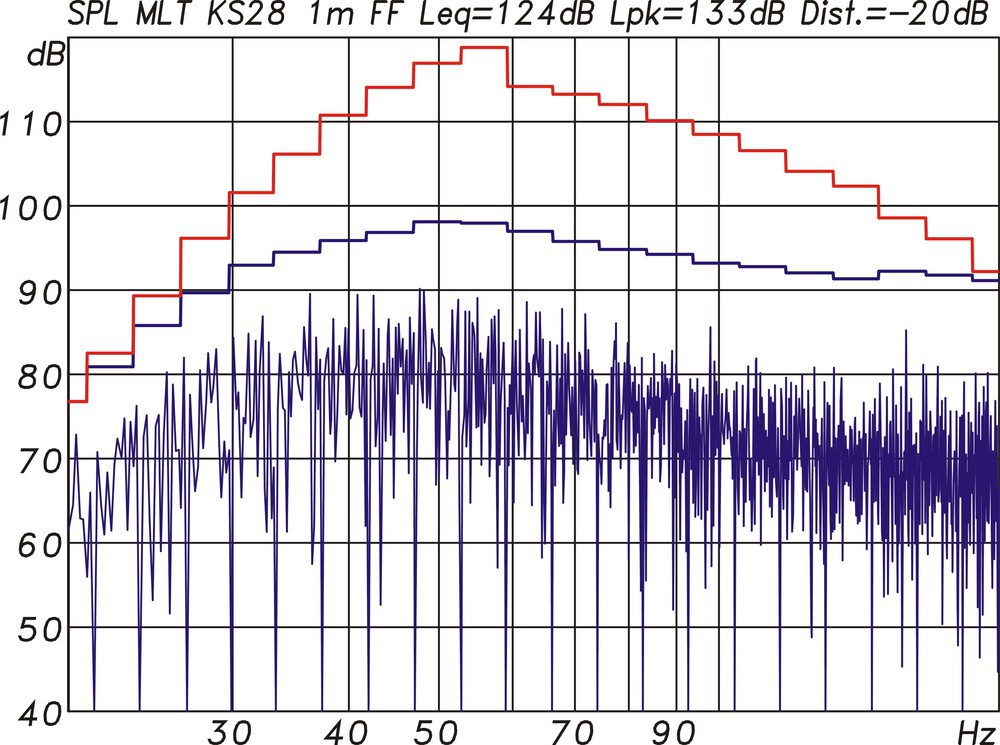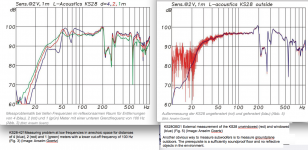Hi there DIYAudio.
For those interested (and who have not already found it via other platforms), I recently published an extensive measurements series / comparison of most of the PA subwoofers I tested in 2021.
The list features 15" and 18" boxes, DIY and commercial:
I published the shootout in video format, on Youtube. I tried to make it as easily approachable as possible for beginners, while in the video description there's an extensive documentation of measurement equipment, methodics & environment for the technically versed.
-> PA Subwoofer Shootout 2021
Enjoy; and I'd be happy if you'd drop me a message or thumbs up on Youtube!
Greetings
Stoneeh
For those interested (and who have not already found it via other platforms), I recently published an extensive measurements series / comparison of most of the PA subwoofers I tested in 2021.
The list features 15" and 18" boxes, DIY and commercial:
- 7 normal bassreflex
- 1 double bassreflex / 6th order bandpass
- 3 bassreflex with flared or exponential port design
- 1 tapped horn
I published the shootout in video format, on Youtube. I tried to make it as easily approachable as possible for beginners, while in the video description there's an extensive documentation of measurement equipment, methodics & environment for the technically versed.
-> PA Subwoofer Shootout 2021
Enjoy; and I'd be happy if you'd drop me a message or thumbs up on Youtube!
Greetings
Stoneeh
Stoneeh,The list features 15" and 18" boxes, DIY and commercial:
- 7 normal bassreflex
- 1 double bassreflex / 6th order bandpass
- 3 bassreflex with flared or exponential port design
- 1 tapped horn
I published the shootout in video format, on Youtube. I tried to make it as easily approachable as possible for beginners, while in the video description there's an extensive documentation of measurement equipment, methodics & environment for the technically versed.
Nice work!
It was especially interesting to compare your bass-reflex enclosure using the 15LB075 to your previous measurement of the JBELL SS15 tapped horn using the same driver, and the little L'Acoustics SB18 band-pass.
Although the "net volume" is important information, the gross enclosure volume and outer dimensions would be useful for beginners or professionals comparing how many boxes will fit in a given space or vehicle.
Including the "Max SPL@10% THD" is great information, though difficult to identify the cabinet to the color, a letter designation would be helpful to determine which is which.
Thanks!
Art
Attachments
Last edited:
Enjoy; and I'd be happy if you'd drop me a message or thumbs up on Youtube!
Greets!
Done!
 😀
😀 Thumbs up!
Thumbs up!Have been contemplating the 18-500, seems like value for money, but I will probably go for SB Audience BIANCO-18SW450 instead.
Good stuff there.
Granted, a 40hz tuning (with subsonic below that) goes really loud !!!!
Vs a 28hz tuning where the max excursion is around 40hz............
Granted, a 40hz tuning (with subsonic below that) goes really loud !!!!
Vs a 28hz tuning where the max excursion is around 40hz............
This is great, and I'm jealous you had so many boxes in one place! I echo Art’s comments regarding the max SPL @ 10% THD plot. A better legend would really help, especially if you’re not making the data available in a format other than the video. I'm not sure what the charts are made on, but exporting the data to text files and using gnuPlot gives great results. It's what the Ath4 software uses.
The only other comment I have is the choice of mic position. At 2 metres distance, you’re likely not in the acoustic far-field for most of the boxes. Certainly not the bigger subs like the KS28. It can be argued that since all boxes are compared in the same manner, it's not a problem, but having seen some interesting changes in response for tapped horns and front loaded horns when moving the mic farther away myself, I always try to use a 5-metre minimum distance for sub measurements these days.
That goes double for max SPL measurements, where the audio interface can be the limiting factor with its own distortion contribution before the mic itself.
Here's an example from Production Partner's assessment of the KS28, with measurement at different distances:

Here's their distortion limited max SPL for comparison too:


You need to add +6 dB to that data, as PP normalise all SPL plots to free space conditions.
Full review here (works well with Bing or Google translate tools) L-Acoustics KS28 im Test | Production Partner
One more thing; I've had a real problem with Arta's calibration method. Have you noticed that the SPL reported in two-channel PIR is massively over-inflated? I get the correct results in other sections and am following the full calibration process, using a True RMS volt meter and a GRAS pistonphone on the same isemCON mic. It doesn't seem to matter what audio interface I use either, although I tend to use an Allen & Heath SQ6 these days with the loca mic input mapped as a direct out to the built-in USB interface.
The issue seems to be that it uses the reference or loopback channel to determine the SPL? If I turn that down or up (just to test), then the SPL reported changes. This doesn't happen in single-channel measurements, but then it doesn't actually adjust the SPL reported as the level increases at the amp or similar.
I don't have the issue with other software on the exact same setup; Smaart, Systune, REW, RoomCapture and CrossLite+ all report the same numbers. It's just ARTA that suggests I've gained over 30 dB more output since closing the calibration window 😀
Just curious if that's something you've spotted? I really like ARTA's feature set, especially turntable integration, but that issue has limited my time with it.
The only other comment I have is the choice of mic position. At 2 metres distance, you’re likely not in the acoustic far-field for most of the boxes. Certainly not the bigger subs like the KS28. It can be argued that since all boxes are compared in the same manner, it's not a problem, but having seen some interesting changes in response for tapped horns and front loaded horns when moving the mic farther away myself, I always try to use a 5-metre minimum distance for sub measurements these days.
That goes double for max SPL measurements, where the audio interface can be the limiting factor with its own distortion contribution before the mic itself.
Here's an example from Production Partner's assessment of the KS28, with measurement at different distances:

Here's their distortion limited max SPL for comparison too:


You need to add +6 dB to that data, as PP normalise all SPL plots to free space conditions.
Full review here (works well with Bing or Google translate tools) L-Acoustics KS28 im Test | Production Partner
One more thing; I've had a real problem with Arta's calibration method. Have you noticed that the SPL reported in two-channel PIR is massively over-inflated? I get the correct results in other sections and am following the full calibration process, using a True RMS volt meter and a GRAS pistonphone on the same isemCON mic. It doesn't seem to matter what audio interface I use either, although I tend to use an Allen & Heath SQ6 these days with the loca mic input mapped as a direct out to the built-in USB interface.
The issue seems to be that it uses the reference or loopback channel to determine the SPL? If I turn that down or up (just to test), then the SPL reported changes. This doesn't happen in single-channel measurements, but then it doesn't actually adjust the SPL reported as the level increases at the amp or similar.
I don't have the issue with other software on the exact same setup; Smaart, Systune, REW, RoomCapture and CrossLite+ all report the same numbers. It's just ARTA that suggests I've gained over 30 dB more output since closing the calibration window 😀
Just curious if that's something you've spotted? I really like ARTA's feature set, especially turntable integration, but that issue has limited my time with it.
Cool thanks for the tests. Good to see that large port areas as I like to build are worthwhile for low bass output and the 18NTLW5000 performs so well. The content would be better presented as a document though and the key for the max output graph is confusing.
kyleneuron,The only other comment I have is the choice of mic position. At 2 metres distance, you’re likely not in the acoustic far-field for most of the boxes. Certainly not the bigger subs like the KS28.
Here's an example from Production Partner's assessment of the KS28, with measurement at different distances:
The Production Partner's assessment example you posted was illustrating the "Measuring problem at low frequencies in anechoic space for distances of 4 (blue), 2 (red) and 1 (green) meters with a lower cut-off frequency of 100 Hz (Fig. 3) (Image: Anselm Goertz)"
The article goes on to mention "Another obvious way to measure subwoofers is to measure groundplane outdoors. The prerequisite is a sufficiently soundproof floor and no reflective objects in the environment."
At any rate, 2 meters is an adequate distance to be in the far field of a sub the size of the KS28.
As Pat Brown (measurement guru, SynAudCon) wrote:
"It is often thought that a remote measurement position is necessary for low frequencies since their wavelengths are long. Actually the opposite is true. It is more difficult to get into the far-field of a device at high frequencies, since the shorter wavelengths make the criteria in Item 4 more difficult to satisfy."
Item 4:
"4. The distance from the source where the path length difference for wave arrivals from points on the device on the surface plane perpendicular to the point of observation are within one-quarter wavelength at the highest frequency of interest ."
This is an important distinction between high frequency and low frequency measurement, criteria #4 can be satisfied at 95 Hz and below for a subwoofer of one square meter mouth area measured at one meter.
Exceptions to the rule would be large subwoofers that have side mounted woofers, or rear exit ports, or other designs where the surface plane perpendicular to the microphone is not the main source of low frequency output.
Art
Attachments
Last edited:
Data-Bass: Subwoofer Measurements
the measurements of the MAUL sub (large) have a section where the same sub is measured at different distances. 2m looks fine to me, gets better SNR than longer distances.
the measurements of the MAUL sub (large) have a section where the same sub is measured at different distances. 2m looks fine to me, gets better SNR than longer distances.
Thanks a bunch for sharing your work, Stoneeh !
And especially for the distortion limited SPL.
Art, thx for pointing out the KS28 measuring distance discrepancies were in an anechoic chamber. Makes sense there...
Whew! For a minute i was second guessing all the myriads of sub measurements i've made out on the driveway...haha.
Although i do typically measure subs at 4m... other than measuring for distortion at 2m to help climb over the noise floor.
And especially for the distortion limited SPL.
Art, thx for pointing out the KS28 measuring distance discrepancies were in an anechoic chamber. Makes sense there...
Whew! For a minute i was second guessing all the myriads of sub measurements i've made out on the driveway...haha.
Although i do typically measure subs at 4m... other than measuring for distortion at 2m to help climb over the noise floor.
- Home
- Loudspeakers
- Subwoofers
- PA Sub Shootout 2021


